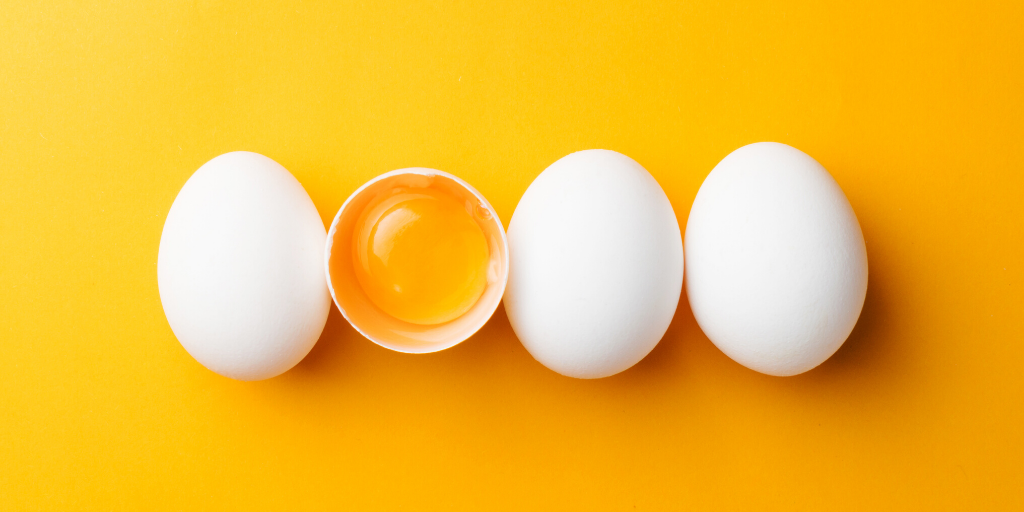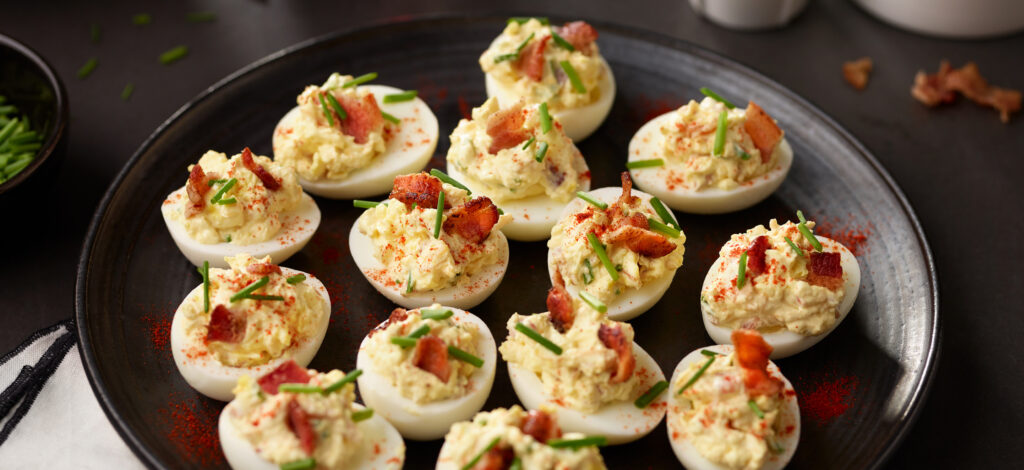As you walk down the grocery aisle and stand in front of the egg case there are many different options you can choose. I went to my local Target and counted nine different kinds of eggs I could buy. From brown or white to cage-free or organic, there were cartons with so many different labels. It can be confusing to know what each label means!
A Conventional egg
Let’s start by talking about conventional eggs. About 85% of the eggs in the store are laid by hens raised in conventional barns. This means that the hens are living in cages with access to feed and water. The cages are indoors in barns where the temperature and humidity are controlled to keep the chickens comfortable and prevent diseases. In these barns, they are also protected from the environment and predators that lurk outside. This method is a very efficient way to produce eggs and therefore conventional eggs are almost always the cheapest!
Brown Eggs vs White Eggs
Whether eggs are brown or white, the insides are still the same!! The color of the egg depends on the breed of chicken that laid it. Brown eggs are laid by chickens with brown ear lobes (did you know chickens have ear lobes??). While hens with white earlobes lay white eggs! All eggs have the same great taste and nutrition.
Cage Free vs Free Range
Cage free and free range sound pretty similar don’t they? That’s because they are, but there are variances that make all the difference when putting a label on the carton. The United States Department of Agriculture (USDA) regulates these labels and has very specific requirements farms must meet in order to use one label or the other. To be considered cage free, eggs must be laid by hens raised in indoor floor operations. This means the hens are free to roam in a building, room, or open area and have unlimited access to food and water. Some also go outdoors and can forage for food. The only difference between that and free range is that the free range hens must have access to the outdoors, weather permitting. Both types of hens are raised under common handling and care practices that provide plenty of floor space, nesting space and perching space.
Organic
The USDA also inspects farmers using the organic label to make sure they are meeting the correct standards. Eggs marked with the USDA Organic label come from hens that are fed an organic diet. The organic diet must consist of feeds grown without the use of conventional pesticides or herbicides. The key word there is conventional pesticides, because there are many organic-approved pesticides that can be used. So why are the organic eggs at Target $3.99 per dozen and the conventional eggs $0.97? The production costs to produce the organic eggs are a lot higher than conventional eggs. The labor costs go up a lot when farming an organic operation. The organic feed also increases the cost.
Which egg is the best? That’s for you to decide!
With a plethora of choices out there it is hard to know what is best for you! There is no right or wrong choice as to which eggs you should buy. I recommend researching all the options and all the different labels and choose the eggs that feels right for you and your family, and that fits in your budget. Click here to find out exactly what each label means. No matter what eggs you choose, all offer a healthy, protein packed meal! Eggs have six grams of protein and zero carbs or sugar, a great start to any day.
Need a great dish for your next get together? Try SISTER MARY’S HEAVENLY DEVILED EGGS recipe, they’re sure to be a hit at any party!
Sister Mary’s Heavenly Deviled Eggs:
- 14 large, hard boiled eggs
- ½ cup mayonnaise
- ½ cup sour cream
- 1 ½ tsp. Dijon Mustard
- 1 tsp. fresh lemon juice
- ¼ tsp. ground pepper
- 1/3 cup crumbled cooked bacon
- ¼ cup finely shredded sharp cheddar cheese
- 2 Tbsp. chooped fress chives
Directions:
- CUT eggs lengthwise in half. REMOVE yolks to medium bowl. RESERVE 24 white halves. Finely CHOP remaining 4 white halves and set aside.
- MASH yolks with fork. ADD mayonnaise, sour cream, mustard, lemon juice and pepper; mix well. ADD chopped egg whites, bacon, cheese and chives; mix well.
- SPOON 1 heaping tablespoon yolk mixture into each reserved egg white half. REFRIGERATE, covered, to blend flavors. SPRINKLE with paprika just before serving, if desired.
All posts are the opinion of the author and do not necessarily represent the view of the Animal Ag Alliance.








